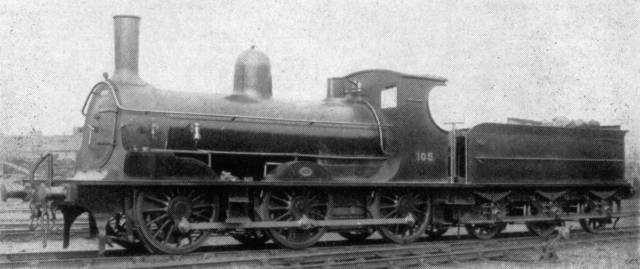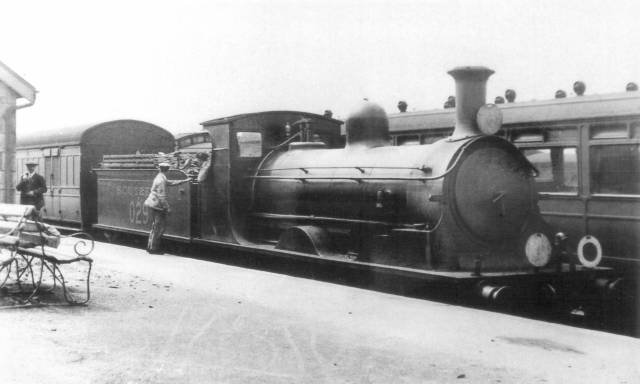Tender engines at Callington
F. Neale and a 395 class
When researching a subject it is often the smallest piece of information, usually stumbled across by accident that can lead to new discoveries or clear up a point that has eluded you for years.
This was the case when I received an email from Chris Osment regarding an entry in the ‘Black Book of Cautions and Commendations to Enginemen c. 1923-1945’ which is held at the National Archive.
Entries in the book include the following about Driver F. Neale on the Callington branch.
6-7-1923.
Cautioned as a result of a derailment of a train no. 160 (02 class) - Bere Alston Points wrong.
3-5-1924.
He received a further caution for not wiring information to Friary about a locomotive failure. Engine E757. (Earl of MountEdgcumbe)
20-2-1925.
He received a caution due to loss of time by engine E222 (02 class)
8-10-1926.
He was suspended for 1 day for running through points at Callington and the engine man changing over whilst engine in motion.
He was severely reprimanded due to a steam brake piston seizure in cylinder. Engine E192 (02 class)
27-9-1928.
Severely reprimanded as a result of a derailment at Callington. Engine E0515. (0395 class)
The Callington branch operated with four engine crews.
Driver Frederick Neale was appointed 'Foreman Driver' (i.e. senior driver) in December 1915 at a salary of 45s a week.
To be appointed senior driver in 1915 would indicate that he had been working on the branch for some time, probably since the opening in 1908.
When Neale was promoted in 1915 assistant driver May was promoted to driver at 32s 6d a week.
Neale had retired by 1949, the four crews then being:-
Senior driver
Bill May his fireman was Bill Stacey
Driver Jack Whicket fireman Bernard Muggeridge
Driver Bill Bryant fireman Bernard Hext
Driver Sid Thomas fireman Ron Woods
Although Neale was no longer working for the railway in 1949 he was remembered by his nick name of Natty Neale.
Apart from being a rather ‘accident prone’ senior driver, a close look at one entry in particular makes very interesting reading.
27-9-1928.
Severely reprimanded as a result of a derailment at Callington (Engine E0515).
E0515 was a class 0395 0-6-0 tender engine.
Class 395 loco, same as the one at Callington
Although there is anecdotal evidence that tender engines (particularly the T9) were used on the branch at times of water shortage, there is not, to my knowledge, any documented evidence…..until now.
There is a photograph of class 395 loco no. 029 with a train at the branch line platform at Bere Alston circa 1930 but this does not necessarily mean that it has come off the branch, it could be picking up flower traffic for onward shipment.
395 class no. 026 0-6-0 locomotive at Bere Alston branch line platform circa 1930. The loco is facing towards Tavistock. If this loco has come off the branch it would have had to go tender first to Callington.
Locomotive 515
The loco was allocated to Guilford in 1925 and Eastleigh in 1929.
The “395” class of locomotives were designed by Adams as a main line goods engine and built by Neilson & Co. Glasgow between 1881 and 1886.
In total there were 70 locos in the class.
Total weight of engine37 tons
Total weight of tender29 tons
Weight in leading wheels12½ tons
Weight on driving wheels13½ tons
Weight on trailing wheels11¼tons
The locomotives were very successful and a favourite with the Railways Operating Division of the War Office which resulted in many of the class being shipped overseas in WWI.
30 saw service in Palestine
11 saw service in Mesopotamia
4 saw service with the Serbian State Railway
4 were lost when the ship carrying them (SS Arabic) was sunk by a torpedo in the Mediterranean
None of these locomotives ever returned to the UK but some were taken over by the war department in Egypt in WWII where their tenders were used as water carriers in the WesternDesert.
Of those that remained in the UK 17 entered service with British Railways in 1948 being numbered 30564-30581. The last one (30567 (né 154) being withdrawn in September 1959 after 76 years of service.
As for 515, she had a Drummond boiler fitted at some time but was re-fitted with an Adams boiler in 1919/20.
In 1929 she was fitted with a ‘Longhedge’ boiler off an ex LCDR loco that had been scrapped. 515 was cut up at Eastleigh in November 1933 but her boiler was salvaged and transferred in 1934 to loco No. 3506.
Bruce Hunt

